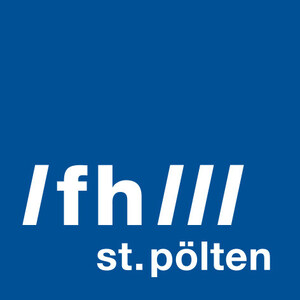Tracing the Steps of Medieval Writers
St. Pölten UAS Research Project Allocates Manuscripts to Authors
Monasteries have extensive collections of medieval manuscripts. In most cases, there is no information on how many scribes were active in any one monastery, whether they travelled between monasteries, and how the scriptoria were organised.
A research project under the lead of the St. Pölten UAS supports historical research and uses artificial intelligence to identify copyists of manuscripts from the 12th century in the library of Klosterneuburg Monastery.
ST. PÖLTEN, Austria, Dec. 12, 2022 /PRNewswire/ -- So far, traditional manual writing style analysis has been carried out by experts in a tedious and time-consuming process.
"There are approaches to identifying the manuscripts of medieval scribes with the help of machine learning. However, these cannot be applied to large collections of texts. We're talking about tens of thousands of pages", says Markus Seidl from the Institute of Creative\Media/Technologies at the St. Pölten UAS, who heads the project and has, together with his team, developed a procedure that makes it possible to apply automatic analysis to large volumes of manuscripts.
Using artificial intelligence and machine learning, the sheer number of pages can be analysed faster. The purpose is not to identify individual scribes as persons or by name but to ascertain whether different texts come from the same or different scribes.
Collaboration between Humans and Machines
"We take machine learning and human expertise and combine the best of both worlds", says Seidl. The machine suggests a certain scribe to the palaeographers – the researchers of historic writing. The experts can either accept or reject the suggestion or make an alternative suggestion. The computer model is gradually improved through the experts' assessments.
"This project does not just help us to interactively work on a significant desideratum of historical research. It also creates new possibilities and tools of analysis that enable a deeper knowledge of all other medieval scriptoria in the area that is now Lower Austria. Based on the study of the scriptorium of Klosterneuburg Monastery in the final third of the 12th century, we can answer bigger unresolved questions regarding the organisation of the written word in high medieval (Lower) Austrian monasteries", emphasises Martin Haltrich, head of the monastic library in Klosterneuburg.
Project Scribe ID
The project receives funding from the Gesellschaft für Forschungsförderung NÖ (the research promotion agency of the province of Lower Austria; GFF, formerly NFB) within the framework of the FTI Call 2018 for digitalisation. Partners in the project are Klosterneuburg Monastery and TU Wien.
https://research.fhstp.ac.at/projekte/scribe-id-ai
About the St. Pölten University of Applied Sciences
The St. Pölten UAS is a provider of performance-oriented higher education with a strong practical relevance in the areas of Media, Communications, Management, Digital Technologies, Computer Science, Security, Rail Technology, Health Sciences, and Social Sciences. As a European University, the St. Pölten UAS manages the European university alliance E³UDRES² (Engaged – European – Entrepreneurial University as Driver for European Smart and Sustainable Regions) and works on the development of smart and sustainable regions together with partner universities in seven countries.
For information and inquiries:
Mag. Mark Hammer
Section Head Press
Marketing and Communications
T: +43/2742/313 228 269
M: +43/676/847 228 269
E: [email protected]
I: https://www.fhstp.ac.at/de/presse
Logo - https://mma.prnewswire.com/media/1735639/St_Polten_University_Logo.jpg

WANT YOUR COMPANY'S NEWS FEATURED ON PRNEWSWIRE.COM?
Newsrooms &
Influencers
Digital Media
Outlets
Journalists
Opted In





Share this article